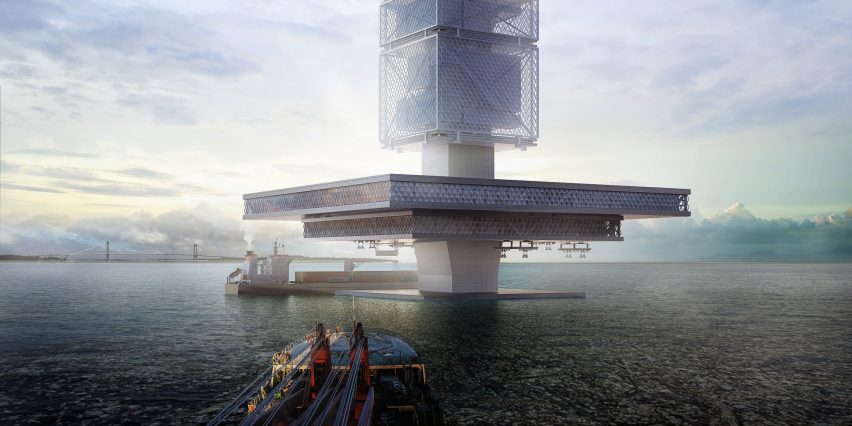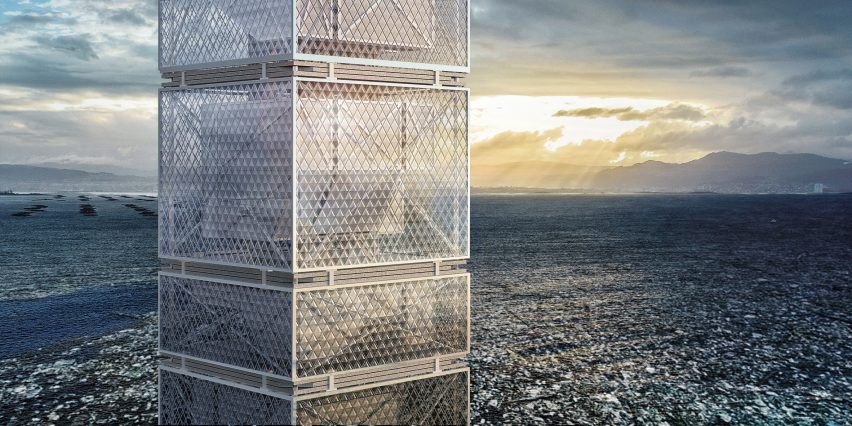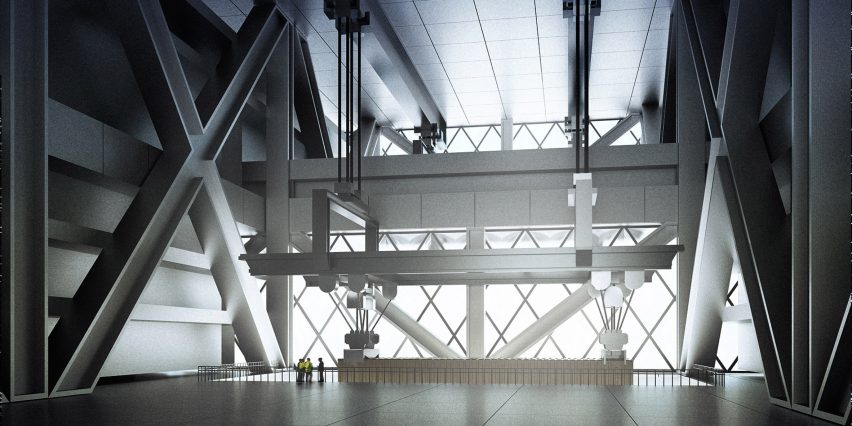
Filtration Skyscrapers in the oceans could "solve environmental and energy problems" around the world
Architectural designer and visualiser Honglin Li has proposed deploying floating high-rise waste-to-energy plants fuelled by plastic waste to clean up the oceans while generating electricity.
The sci-fi proposal, called Filtration Skyscraper, imagines placing unmanned towers on abandoned oil rigs in parts of the oceans where plastic waste accumulates.
Sophisticated machinery in the conceptual towers would generate electricity and biofuels from plastic and other pollutants extracted from seawater.
"It involves converting an abandoned oil platform into a vertical recycling skyscraper," the designer told Dezeen. "It could filter the floating garbage and clean the seawater while taking on the world's energy crisis."
Honglin Li proposes placing the towers in the so-called Great Pacific Garbage Patch, where billions of plastic particles have accumulated in a rotating current called a gyre.

"It is envisioned for the North Pacific Gyre, which is the largest and thickest garbage patch in the sea," he told Dezeen. "However it could be deployed worldwide to solve environmental and energy problems."
The Great Pacific Garbage Patch contains an estimated 1.8 trillion pieces of plastic, although most of these have broken down to confetti-sized pieces that are thinly dispersed over an area the size of Texas. Just three per cent of the plastic in the gyre is thought to be floating on the surface.
The concept was developed for the 2019 eVolo skyscraper competition, an annual competition that recognises projects that challenge concepts around vertical architecture and its relationship with the natural and built environment. Li's design was awarded an honourable mention.
While fanciful, the proposal brings together a range of real-world recycling and energy-generating processes.

"I did research about existing material recovery facilities (MRF) and water treatment plants (WTP) and combined them vertically in a modular, prefabricated megastructure," Li said.
Recovered waste will be burned to generate energy in a waste-to-energy plant, which would produce power or fuel to run the facility plus a surplus that could be used ashore.
"The system I proposed will be similar to the Amager Bakke in Copenhagen by BIG or the Shenzhen East Waste-to-Energy Plant in China by SHL that produce harmless C02 as final waste and has the least environmental impact," he said.
"The electric power can be either used in the facility to support all the mechanical movement including pumping the contamination and polluted seawater, or can be outputted in the form of electric energy or combustible biofuel," Li told Dezeen.

Under the proposal, polluted seawater is pumped to the top of the structure and filtered as it descends, with plastic and other contaminants removed, sorted and either burned or composted in an onboard composter.
An elevated podium provides shelter for ships to dock in order to take away waste material. "Eventually, non-recycled material and recycled material will be transported away by tidal power," Li adds.
Li's proposal is the latest and most futuristic approach to tackling ocean pollution. Dutch startup The Ocean Cleanup has raised millions of dollars to develop huge floating rigs that will float autonomously around the North Pacific gyre, scooping plastic as they go. However the project has struggled with technical difficulties and scepticism about its likelihood of success.
Meanwhile Parley for the Oceans has turned marine plastic waste into a desirable material by marketing luxury goods made from the material under the trademarked term Ocean Plastic.
However Parley's founder Cyrill Gutsch recently told Dezeen that ridding the oceans of plastic is impossible. Instead, he said non-polluting alternatives to plastic need to be developed.